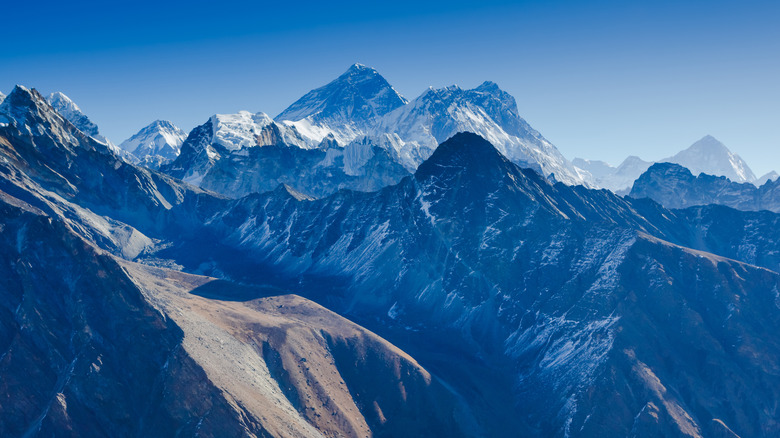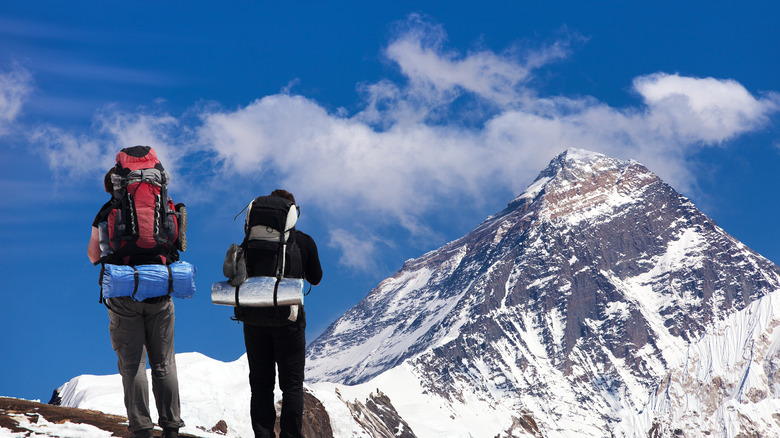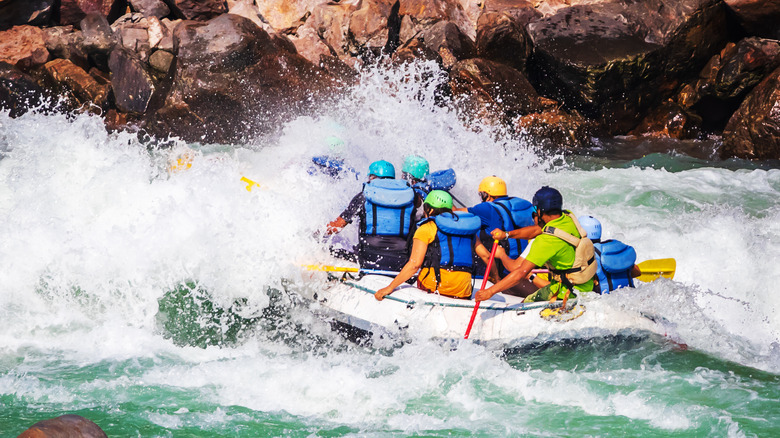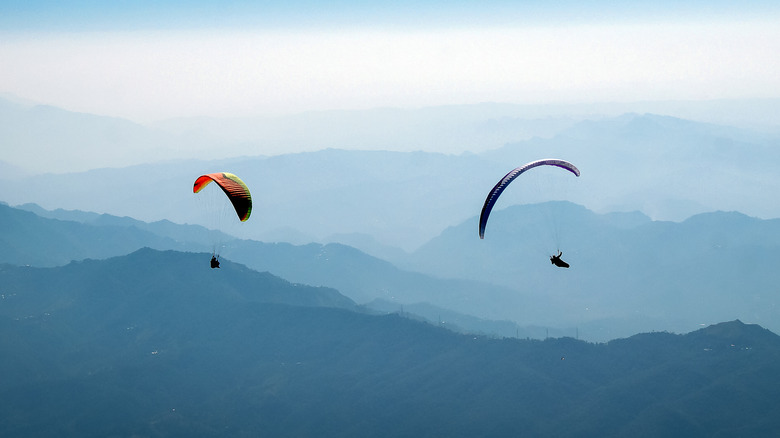The Story Of Two Friends Who Climbed Mt. Everest And Made Their Way To The Indian Ocean
Scaling Mt. Everest is an item on thousands of people's bucket lists. Situated along the border of Nepal and Tibet, the 29,032-foot peak (via Britannica) is notoriously grueling and takes a lot longer than you realize to ascend: around two months, per CNN. But, that's not including the months of physical training recommended to adapt to high altitudes, freezing cold weather, and a diet of dehydrated foods. According to CNN, the trek can also carry a hefty price tag, typically costing climbers "anything from $35,000 to more than $100,000." And, you want to be prepared before beginning the journey – many people have died climbing Mt. Everest.
Nepal native Sanobabu Sunuwar didn't have the climbing experience of most people who try to scale Mt. Everest, nor did he have the tens of thousands of dollars usually spent on equipment, coaching, and supplies. But, he certainly had the dream and the gall — ambitiously aiming to not only scale the tallest mountain on Earth but to cap off the journey with a 500-mile kayak trip down the Ganges River, one of the most sacred rivers on the planet (via ABC News).
Sanobabu Sunuwar meets his Sherpa
With little climbing experience, the goal was perhaps a little too ambitious to accomplish solo. But luckily, Sanobabu Sunuwar found a climbing partner — experienced in mountaineering — who was willing to take him to the top of Everest (aptly named Lakpa Tshiri Sherpa), per ABC News. In exchange, Sunuwar would guide Sherpa, who didn't know how to swim, down the mountain via paraglider and through the Ganges River to the Indian Ocean (via ABC News). They called it the "Ultimate Descent," per National Geographic.
Per ABC News, once the duo arrived in Mt. Everest's so-called "death zone," above 26,000 feet, they were running low on oxygen. Barely making it to the top with sufficient supply, there was no time to waste before their descent. The two got a running start from the peak — carrying the weight of all of their equipment — and began to fly. Only the third group of people to descend Everest via paraglider, the pair set a "new world record of 8,865 meters for free flight in the process," and landed on an airstrip in Nepal, per National Geographic.
The meat grinder
Surprisingly, the ascent up Everest was perhaps one of the easiest parts of their journey. Once they landed, their next goal was to cross the Himalayan and Ganges Rivers — riddled with rapids named things like "Punch," "High-Anxiety," and the "Meat Grinder," (via Rustic Himalayan Adventure) — that have earned it the name of one of the most dangerous rivers on the planet, according to ABC News. Robbed at knifepoint, they lost most of their supplies and had to spend the rest of their trip surviving off fallen bananas, mangoes, and other fruits they passed along the way (via National Geographic).
According to ABC News, the journey was "not exactly legal," because typically a permit is required to scale Mt. Everest. However, this wasn't a James Bond chase scene type of thing. Although there were repercussions for climbing Everest rogue, one of the duo's supporters, a paragliding pilot named Kimberly Phinney, told ABC News that "as much as the army was after them, all of the army guys were just like 'That's awesome.'"
Adventurers of the Year
On June 27, 2011, about two months after their journey began, the pair reached the Indian Ocean, becoming the first people to travel from the mountain's peak to the sea, according to National Geographic. Their courage won them the 2012 National Geographic Adventurers of the Year Award, and they also produced a film that was shown across Europe, according to National Geographic and ABC News. "We feel a little like movie stars," Sunuwar told National Geographic. "People wanted to shake our hands. We were very happy to share our story."
In addition to the physically grueling nature of the journey, the pair was faced with emotional challenges as well — hiding from robbers in the bushes, or seeing two or three dead bodies a day in India, per National Geographic. But, both said their favorite part of the whole trip was the moment when their feet left the ground on Mt. Everest and they began to fly. "We were both singing," Sherpa told National Geographic. "This was a dream for both of us."



